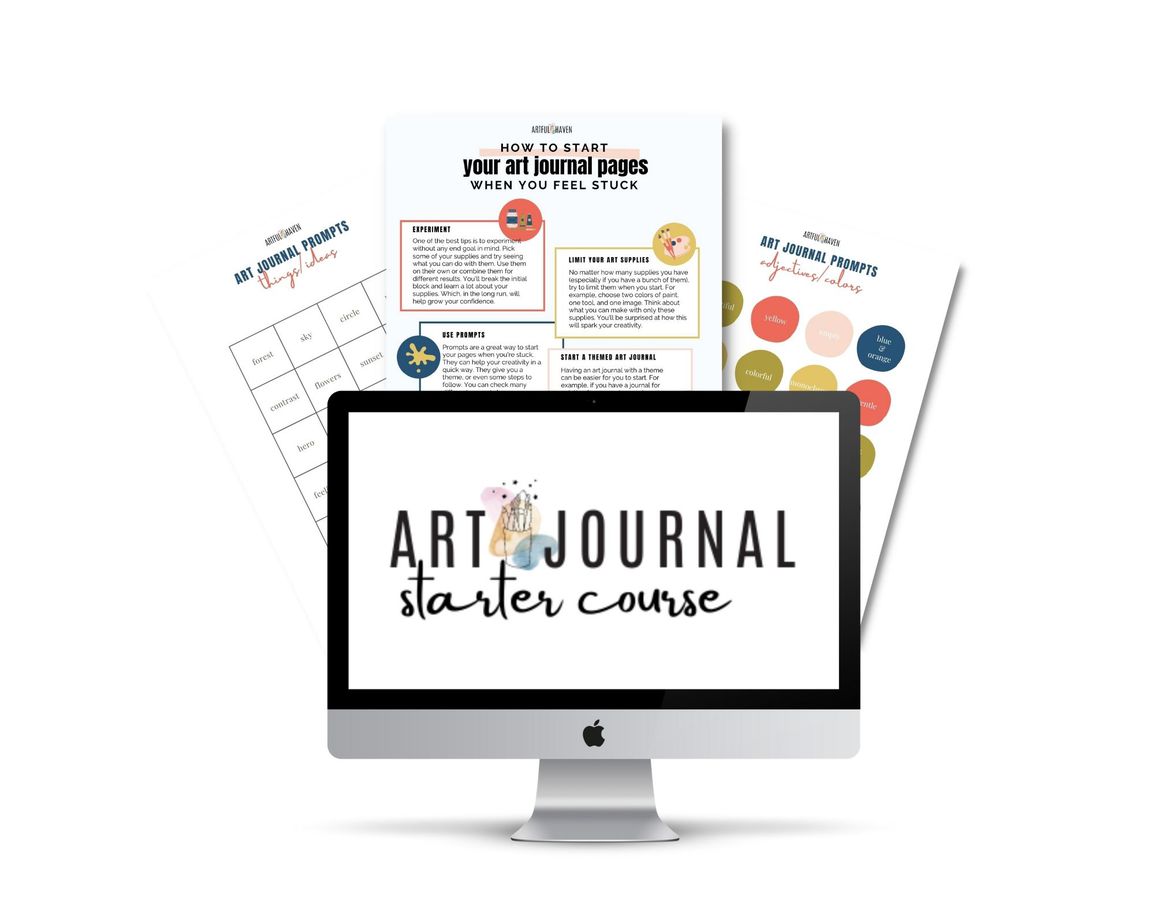13 Drawing Exercises for Beginners (Absolutely Easy to Do)
You may think that you can’t draw. But I promise you you can get better with consistent drawing exercises, even if you’re only a beginner.
Every beginner is afraid of messing up and not getting the results they want.
Very few people are born with extraordinary talents. The rest of us need to practice and practice.
And by doing some basic drawing exercises on a daily or weekly basis, you must get better at drawing. You’ll see.
Now, let’s see what you can do to improve your drawing skills in your art journals or sketchbooks so you can make wonderful pages and enjoy every second of it.
Why you should practice drawing regularly
Well, there’s a thing called the muscle memory. Yep, that exists.
The dictionary explanation breaks it down like this:
“…the ability to repeat a specific muscular movement with improved efficiency and accuracy that is acquired through practice and repetition.”
Imagine yourself doing sports. With time, your body and muscles get better and you improve your skills.
This is because you train your muscles and they remember what they need to do.
The same thing happens with drawing.
The more you draw different things, the more your hand muscles remember the moves and strokes, and you simply improve.
That’s it. Drawing will then become more natural for you and you’ll feel more confident.
Disclaimer: Some links in this post may be affiliate links. This means that if you purchase something through that link, I get a small commission, at no extra cost to you. Refer to our Disclosure.
Simple drawing exercises
Here are the drawing exercises you can do almost every day. Take 5 or 10 minutes a day and do one exercise.
If you feel you need to repeat the same one, do it. Don’t set any time frames or deadlines for yourself. Just enjoy the process of practicing.
You can also choose one sketchbook or a journal and use it only for these exercises.
Line drawing exercise
As simple as it may seem, you need to practice drawing lines: straight, curvy, zig zag, swirls, etc.
Trust me, you need to train your hand to always draw a straight line. This is also true for any kind of line.
Drawing is all about the lines, so if you master this, you’ll be able to draw many things, like faces or animals and flowers.
Straight lines
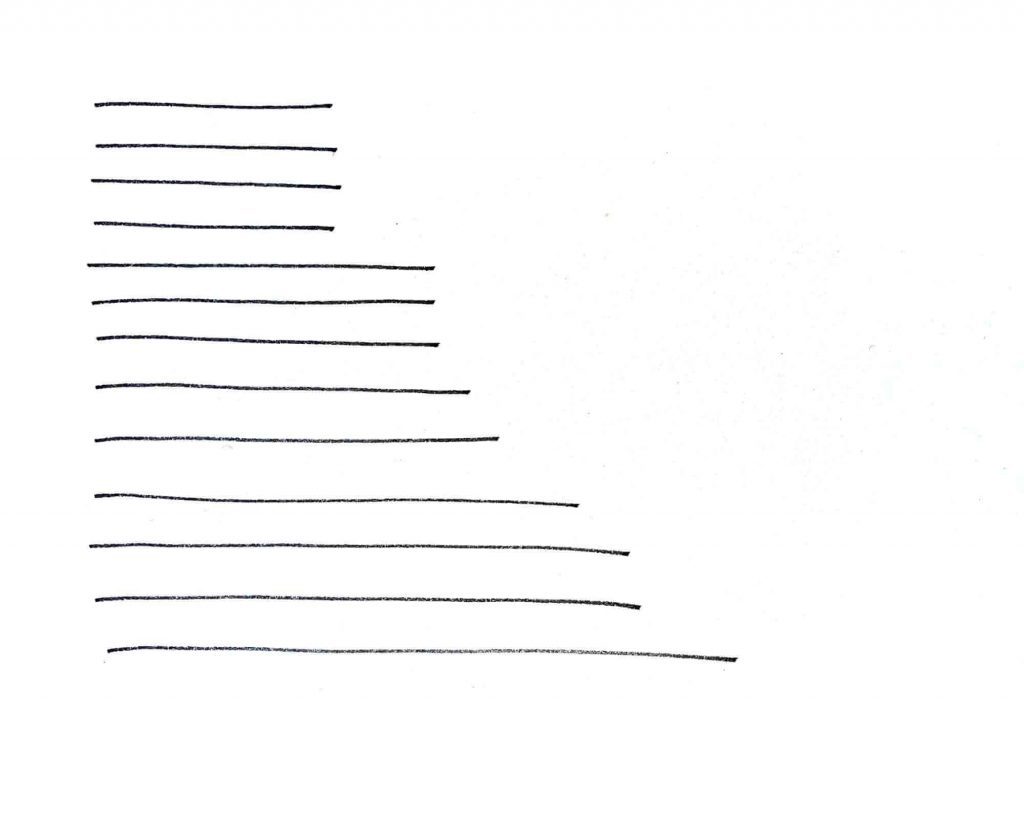
Take your pencil or a pen and draw straight lines first. Start slowly and later try to draw the lines as quickly as you can but try to make them straight.
If you need more guidance, draw two dots and try to connect them with your lines.
Yes, you can repeat the same line over and over again if you want to practice drawing quick lines.
Then, start experimenting with long and short lines. Begin with short ones and once you feel up to it, continue with longer lines.
Also, what you can practice is the space between the lines. This will help you get the lines straight.
If you manage to keep the space even between all the lines, you’re close to mastering this.
When you draw lines, they don’t always need to be horizontal. Practice drawing vertical lines, too. It’s a bit more difficult, but it’s worth it.
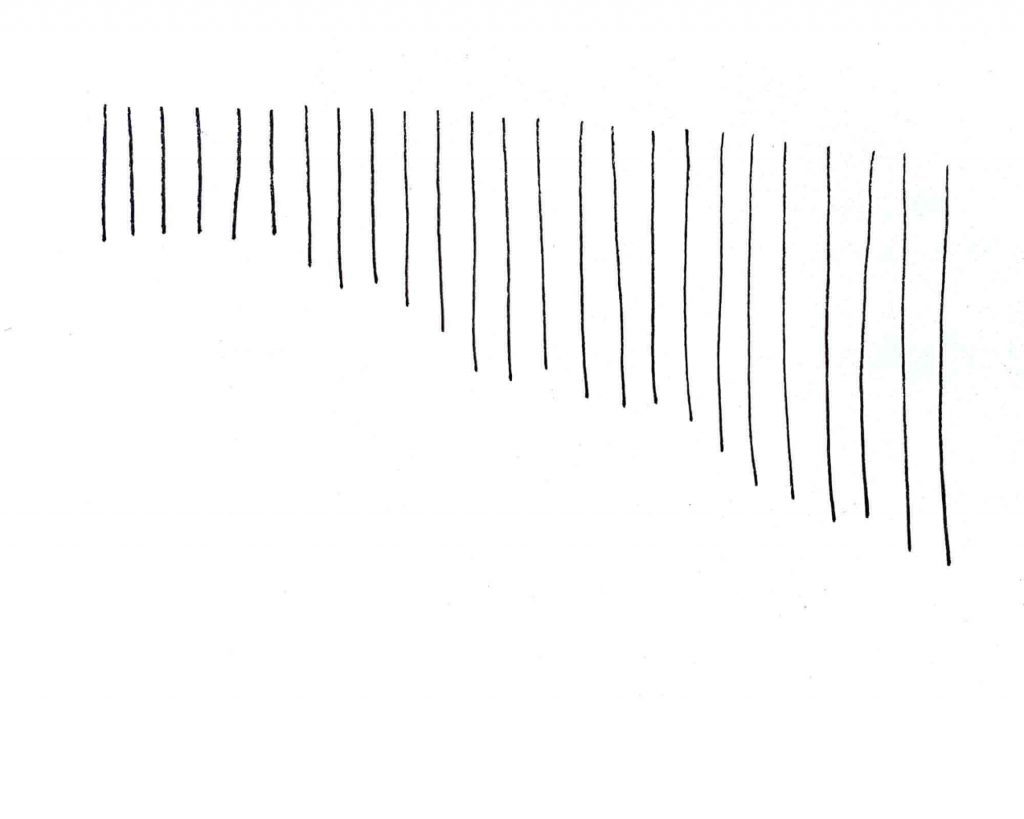
This drawing exercise is a great warm-up exercise before drawing something more complex. Your hand needs to get warm and ready.
So, when you want to draw something, do these simple exercises to help your hand feel the vibe.
Curvy lines
You can practice all kinds of curvy lines. Here are some examples:
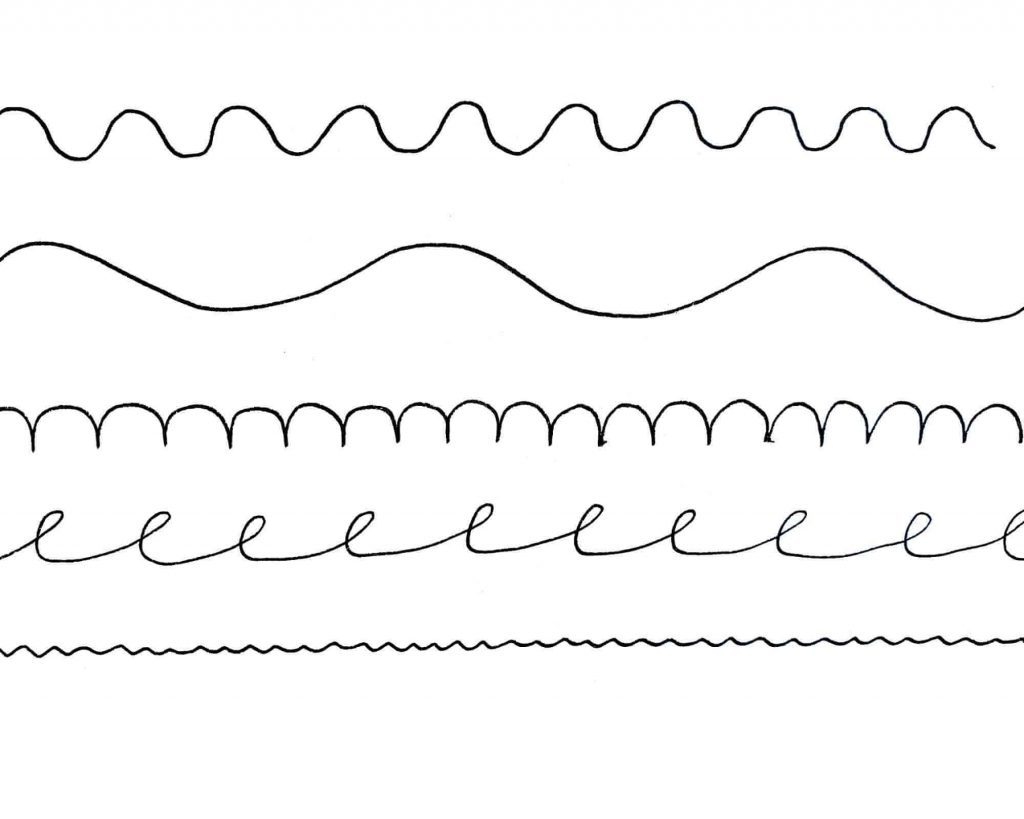
These lines are also important. Practice drawing them as same as the straight ones. Start with shorter wavy lines, then draw them longer.
Zig zag lines
They seem very easy to draw, but they can be challenging, too.
I believe it’s important to practice these lines as well. It’s all about making your hand steady and memorizing the movement.
Vary the lines in size, length, and the space between one another.
Here are some zig-zag lines you can practice:

Shape drawing exercise
Shape drawing is as important as line drawing.
Once you practice lines, it’s time to spice them up a little with shapes. You can draw basic shapes like circles, squares, triangles, rectangles, and ovals.
It might seem that anyone can draw a circle or an oval, but in reality, many people struggle with that.
For example, when I first started drawing faces, I struggled to draw the basic oval for the head.
But I practiced this shape and now I can draw it quickly and it will always look like an oval on the first try.
Do the same with circles and squares. Repeat the lines of one circle multiple times, then draw another one, but vary in size.
You’ll see how your muscles will remember this and soon you’ll draw any shape on the first try and it’ll be amazing.
Also try drawing shapes in 3D perspective, not only flats. This way, you’ll discover new areas you need to practice, which is always a good thing.
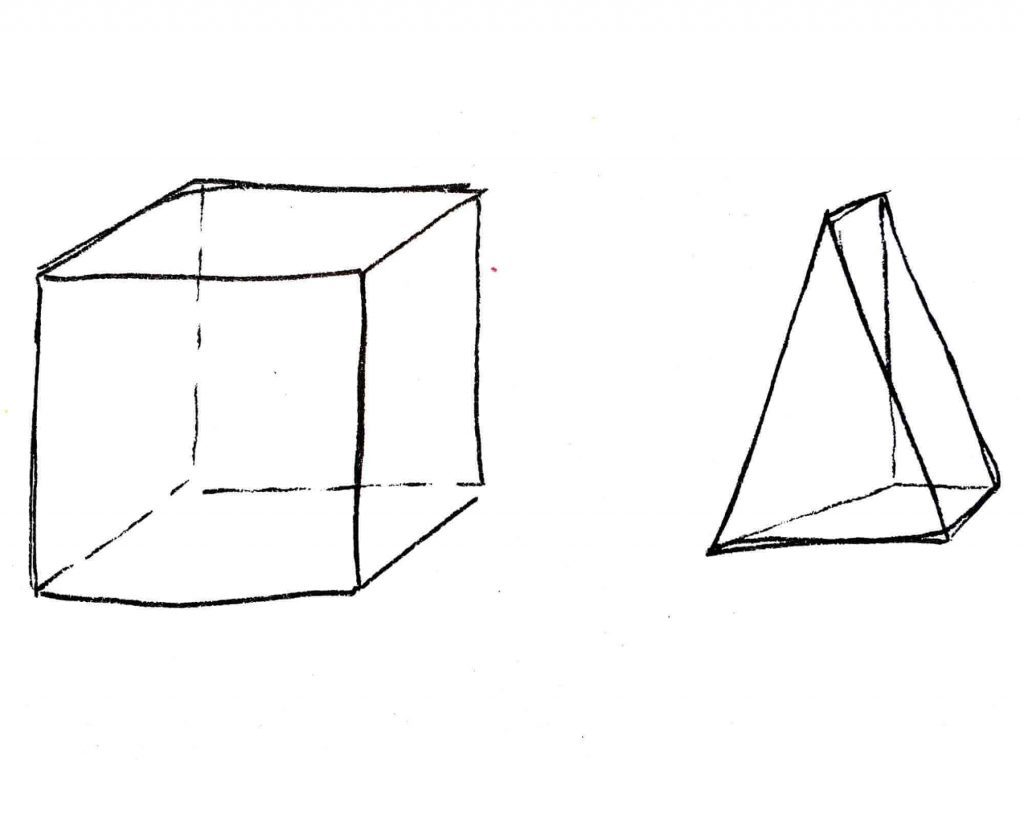
Just scribble
Scribbling is a great drawing exercise, no matter how silly it sounds. Scribbles are often underestimated but I love making them and they really relax me.
So, take a pen or a pencil and draw without any purpose, meaning, or shape. Go all over the paper if you want to.
Experiment with the way you hold your pencil and the way your wrist moves when scribbling. Check the video below:
Draw something new
This means that you should draw something you usually don’t.
From time to time challenge yourself and trick your mind by drawing something you normally wouldn’t. Your brain will be surprised and pay more attention.
All in one take
This is an amazing exercise and you’ll feel like a playful child. Giggles guaranteed.
So, try drawing without lifting your pen from the paper. This makes your brain figure out ways of drawing certain things and sparks your creativity. It’s like a problem-solving exercise, as well.
Your drawing in this exercise will probably look funky and wonky at first but never mind that. Embrace the learning process. This is only a drawing exercise, not a drawing competition.
The easiest way to do this is to decide to draw something simple like a flower. You need a few petals, a stem, and maybe a couple more details.
Start drawing from the inside out, or from the bottom of the stem up. Of course, you can repeat the same lines more times because your pen must stay on paper the whole time.
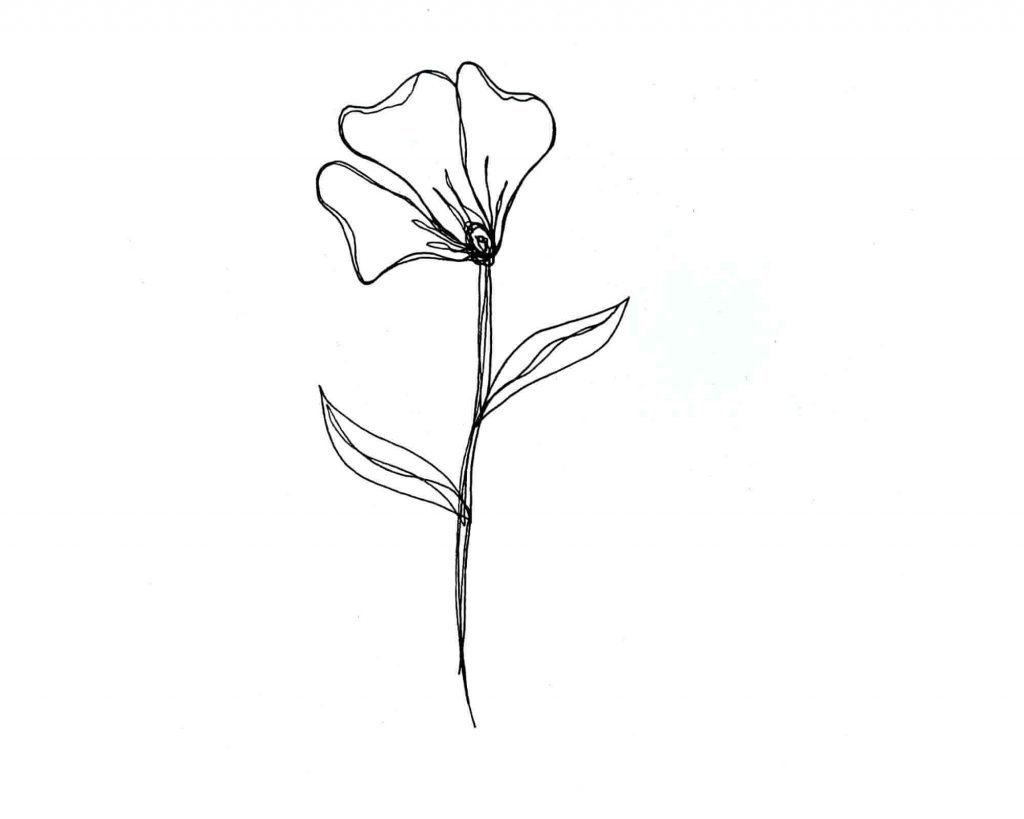
One thing in two ways
Try drawing one thing in two different ways, eg. a face that’s happy and one that’s sad, a fresh flower and a dying flower, etc.

You don’t have to nail these drawings so they look perfect and realistic, stick figures will do, too.
If you expect perfect results, you’ll never survive these simple drawing exercises. They’re made to be easy, simple, and for practice.

This exercise will spark your creative thinking and who knows what ideas you’ll come up with. It’s so much fun to think of new ways of doing something, right?
Sketch what you see
Sit in any room you love and just sketch out everything you can see. You can do this outside as well.
Imagine your view in a box/container and sketch everything you see. The important thing is to sketch, not pay attention to details. Just go with the flow.
Don’t worry if your perspective is distorted, mastering these things takes time.
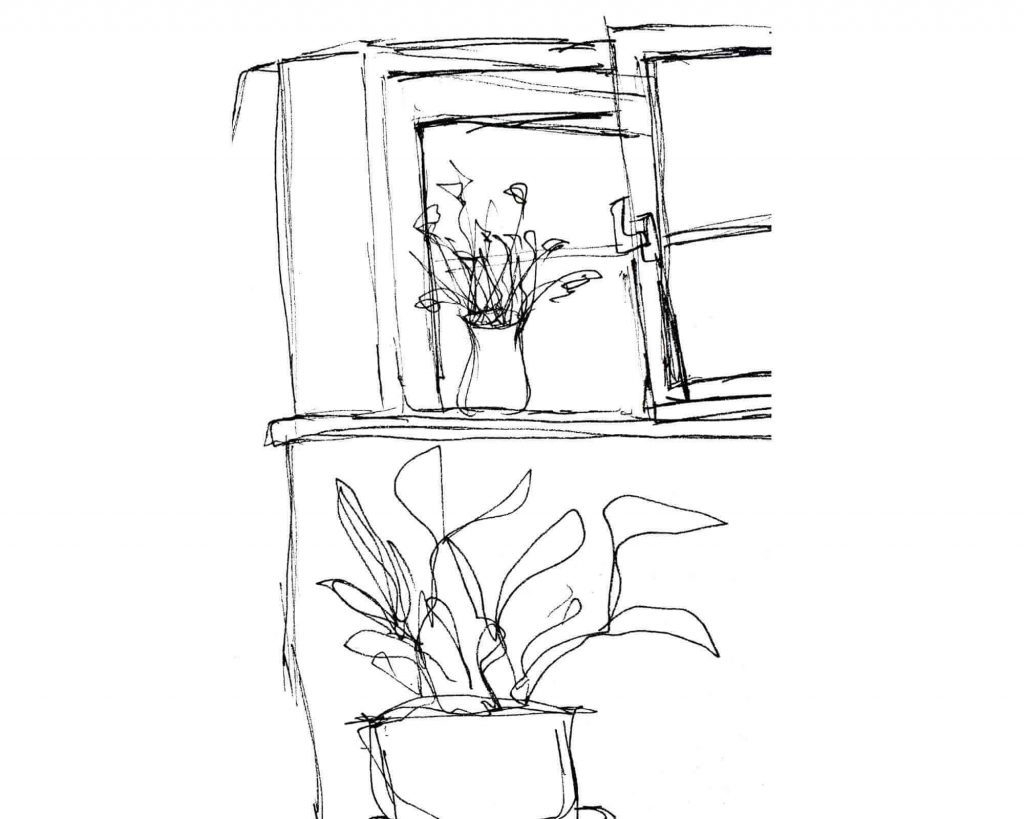
Draw patterns & mandalas
Drawing patterns is a great way to practice your drawings. This exercise makes you repeat the same lines and shapes over and over again and they slowly become your second nature.
Also, drawing patterns is always fun and you can make amazing designs with lines and basic shapes.
Remember how important it was to practice lines? With patterns, you’ll feel like you moved to the next grade of drawing skills.
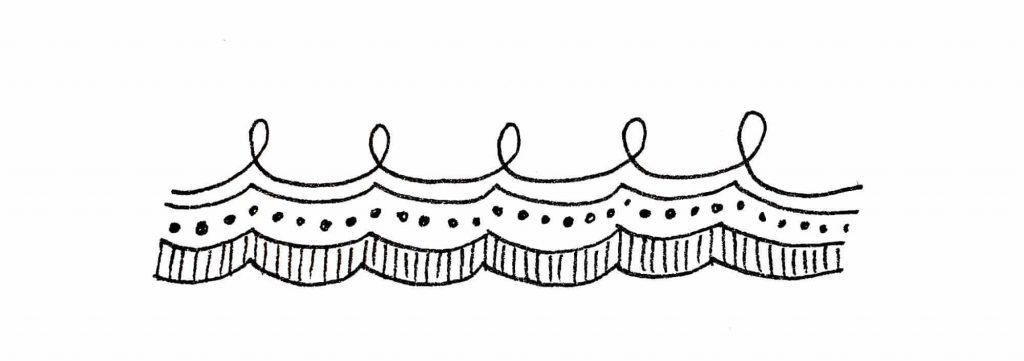
Drawing mandalas is similar to drawing patterns. They’re round designs with repetitive elements.
So, start from a small point that will be the center in the end, and build around it. Fill the white space with smaller elements.
The easiest way to start is to draw a circle and then divide it into equally sized triangles that grow from the center to the outside of the circle.
Then, draw more circles inside the big, main circle.
Finally, fill each space you created with identical patterns and connect them to one another.
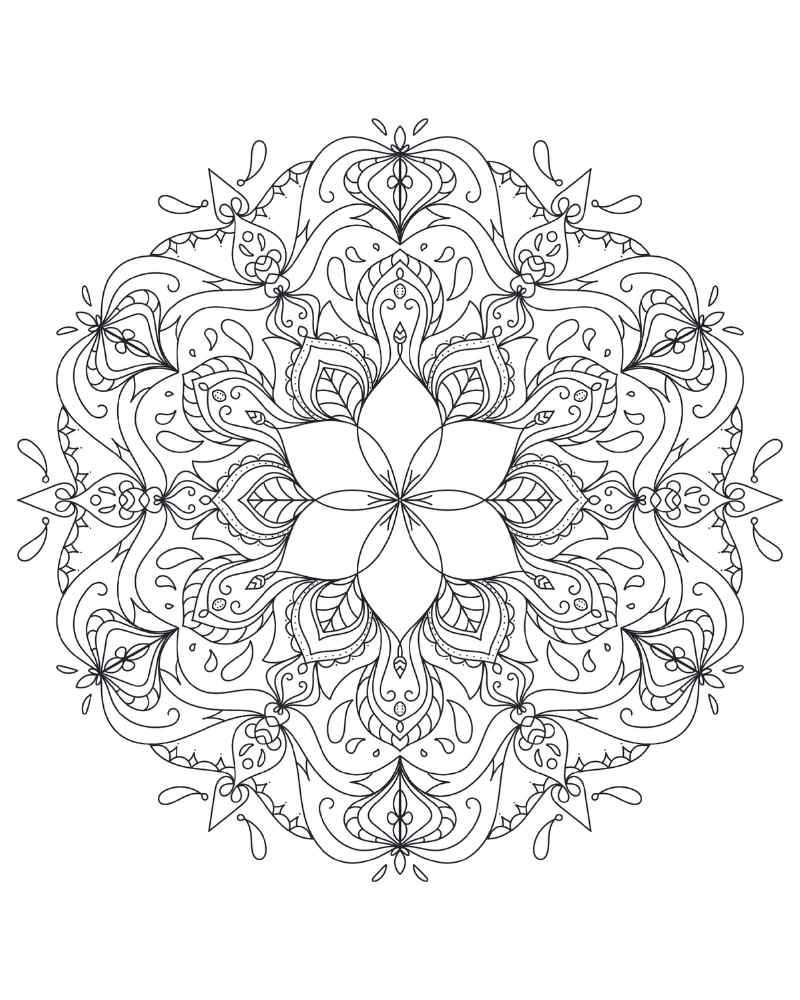
Magazine images transfer
What you need for this are some magazine images of faces and carbon paper. I say faces because that’s the easiest and the most common thing in magazines to copy.
Every face consists of the same features, that’s why I didn’t tell you to copy buildings, for instance.
There are so many different ones that your muscles won’t remember what you drew.
To start, just follow the lines on the magazine image and transfer them to your paper. Later, you can add more details to the paper drawing.
For example, if you copy 10 eyes like this, your hand will remember how you drew the eyes so it’ll be easier later. This is also true for any other shape.
This drawing exercise is easy to do and you can make as many as you want.
Wrist game
Try holding your pencil in different ways to see how this changes your drawings. Maybe you’ll figure out a way of holding your pencil that better suits you.
Even if you don’t, you can always play with this exercise and create new and interesting drawings.
For fun
This drawing exercise is very common among artists. All you need to do is draw with your non-dominant hand.
I know it sounds daunting, but it costs you nothing to try. I promise giggles with this one, too.
Your perspective will go crazy, your eyes will be all over the place, and your brain…totally and utterly confused. But it’s a great thing to step out of your comfort zone.
What should a beginner start drawing?
If you’re only a beginner, you can try the simplest things to draw.
For example, choose one of the following:
- simple flowers
- shapes like clouds, buildings
- very simple faces (nothing fancy, just some line and shapes practice)
- leaves (try different sizes and shapes)
- abstract shapes (and maybe fill them with patterns)
Best pencils for drawing
I’d be lying if I told you I was an expert on pencils.
However, I have a set of pencils that I really like using for drawing.
So, here they are:
Staedtler Mars Lumograph set of 12
Staedtler Lumocolor Permanent: these pencils are waterproof.
Stabilo All: not waterproof, but great for adding dimension to sketches with a bit of water and a brush.
Best pens for drawing
Pens are a bit trickier to use for drawing but of course, you can use them. They’re just not as flexible as pencils. And you can’t erase them.
I’ve used two brands of black pens that I really love for drawing.
They come in different nib sizes and are waterproof, which is really important if you’re going to use your drawings together with wet media.
You can also use Posca pens which can be great for detailed work, but not so much for practicing drawings because you don’t want to waste them on practicing.
At least I don’t. When I practice, I use mostly the pencils I told you about or the fine liner pens.
Other tools for drawing
If you feel you can advance a little bit with drawing tools, you can try ink or chalk.
Ink can be messy but it’s fun to try it. You can use a brush or a dip-in pen for inks. The brush is messier than the pen and will give you thicker marks.
I sometimes use chalk for larger drawings but not very often because its powder transfers to other pages.
If you still want to try it, maybe you can seal the drawing with a fixative. I’ve never tried any fixative, so I can’t recommend anything specific yet.
What to do with the pages you practiced on?
Well, use them. If you already reserved a separate art journal for drawing, after you use all the pages, just paint over them and make art.
Or, you can tear out the pages, cut out the drawings and use them as stickers or elements on your other journal pages.
You can also color in those drawings.
There is so much you can do, so don’t throw them away. Be creative with them.
Drawing exercises – final tips
Just remember that Rome wasn’t built in a day, that practice makes perfect (although I don’t believe in perfect), that patience is everything…and so on.
Don’t rush yourself into expecting spectacular drawings right from the start. Give yourself time and enjoy the process.
These simple drawing exercises will help you in the long run. Just don’t give up on them. Patience is key.
Also, these exercises are great for warming up before you start drawing more complex images. Take a few minutes to remind your hand of lines, shapes, etc.
Furthermore, be consistent. You don’t have to practice drawing every day if you don’t have time. But do something at least once a week. All you need is 10 minutes for one drawing exercise.
Your inner artist will thank you and you’ll see there are many ways of playing in your art journal.

